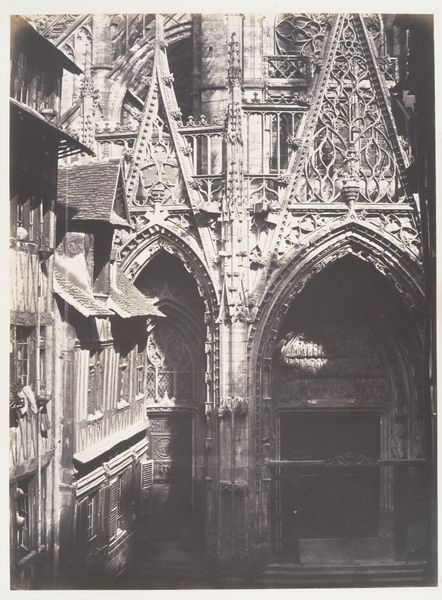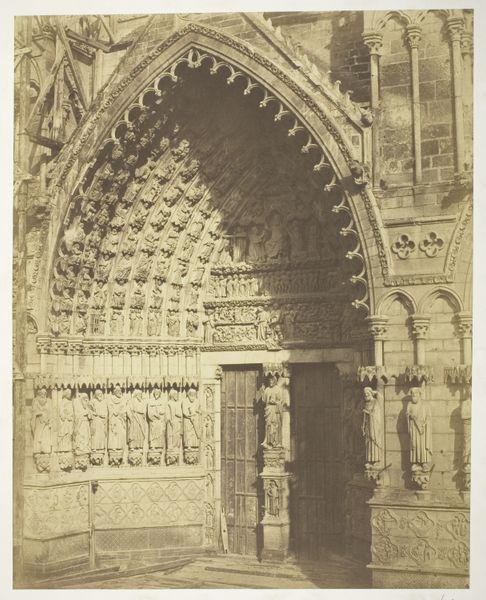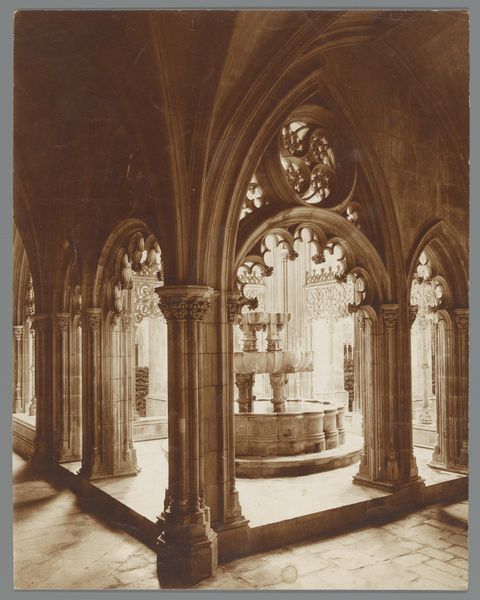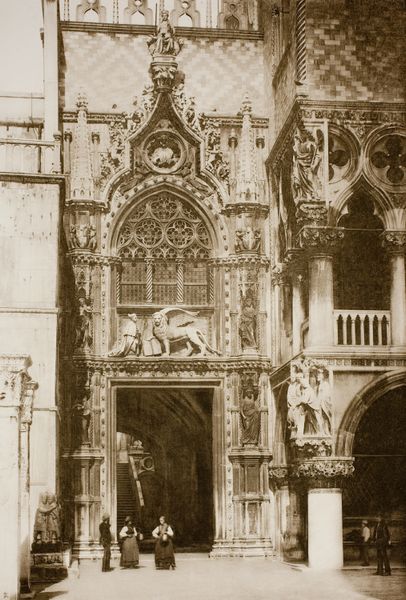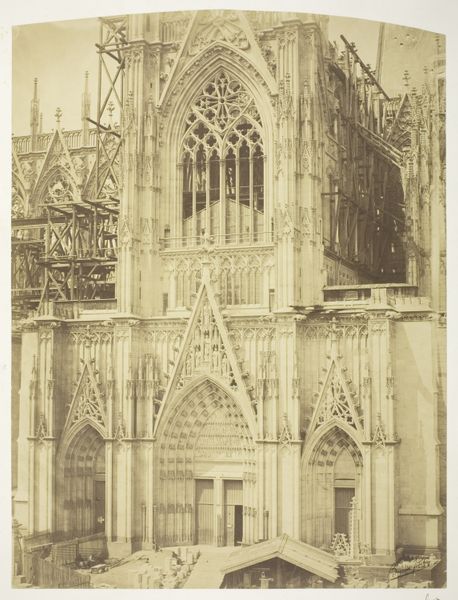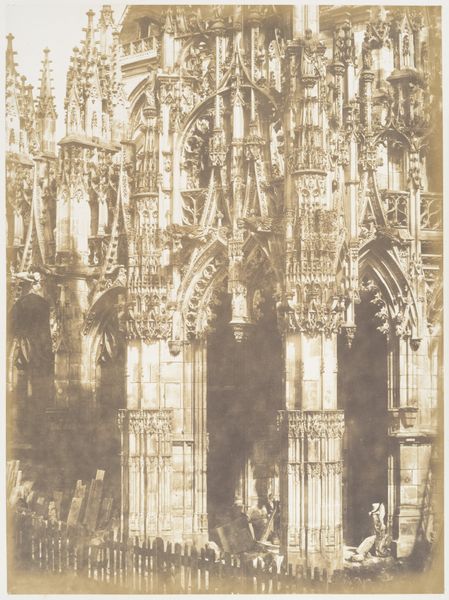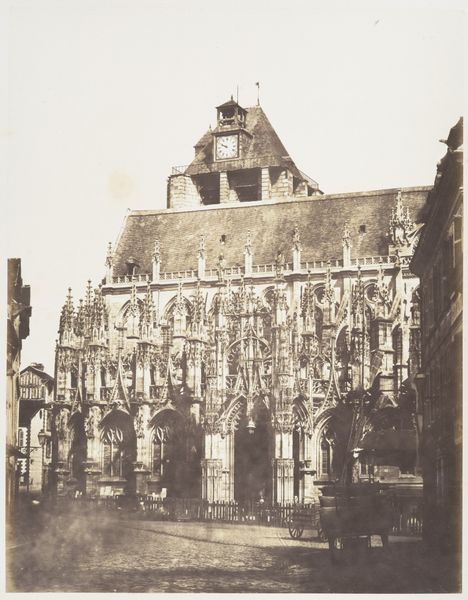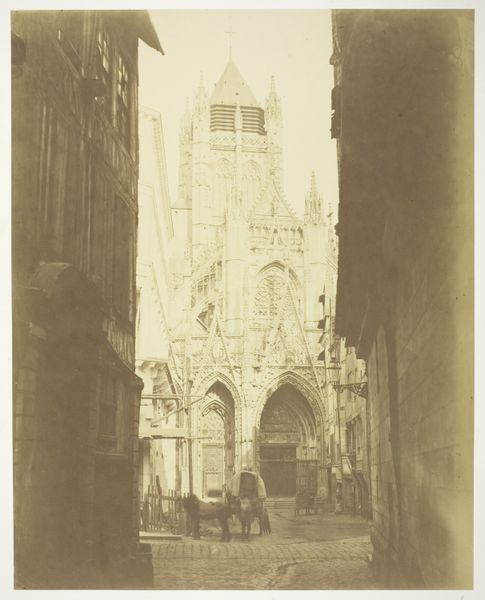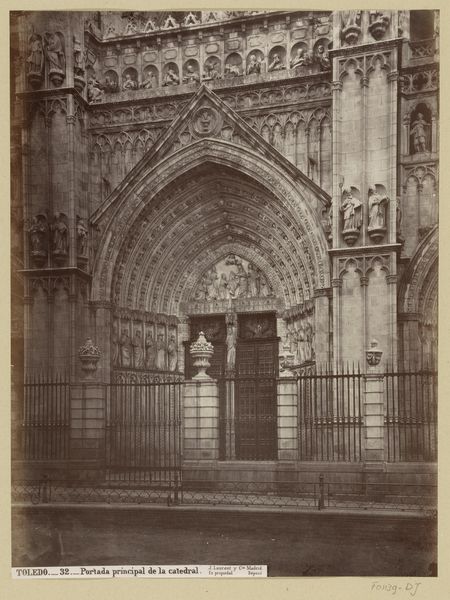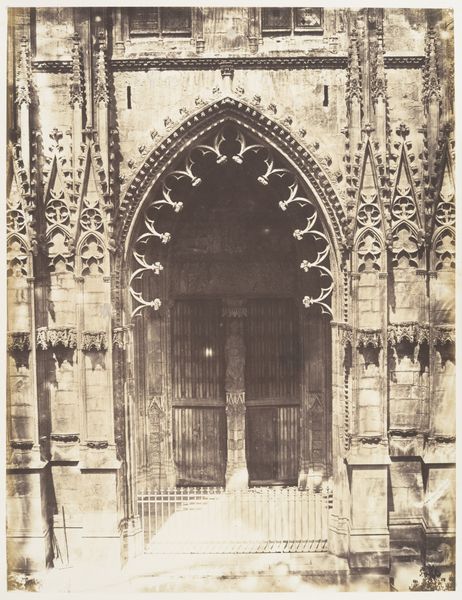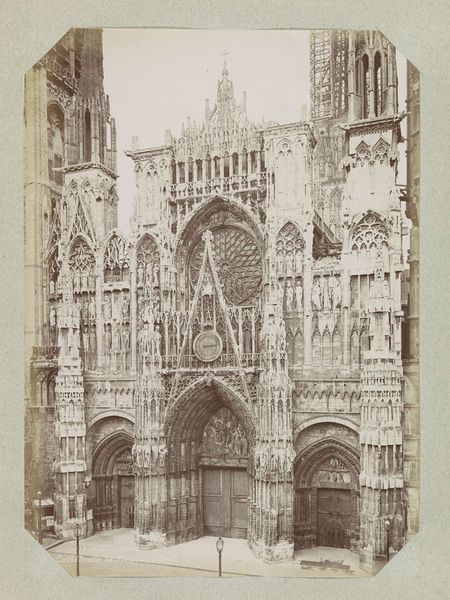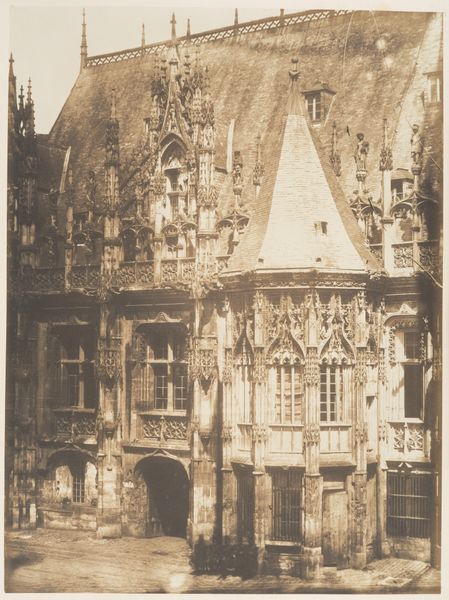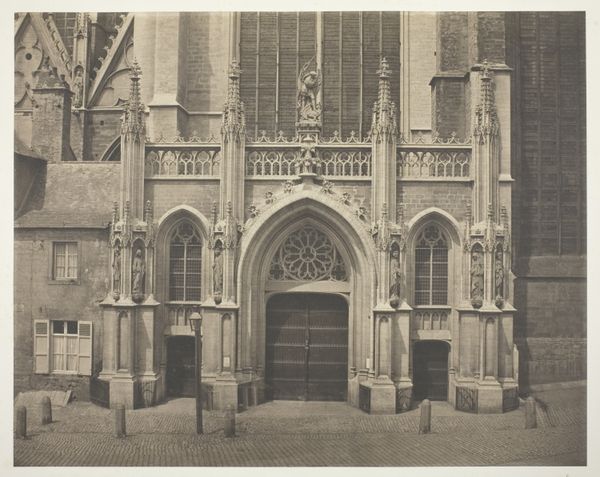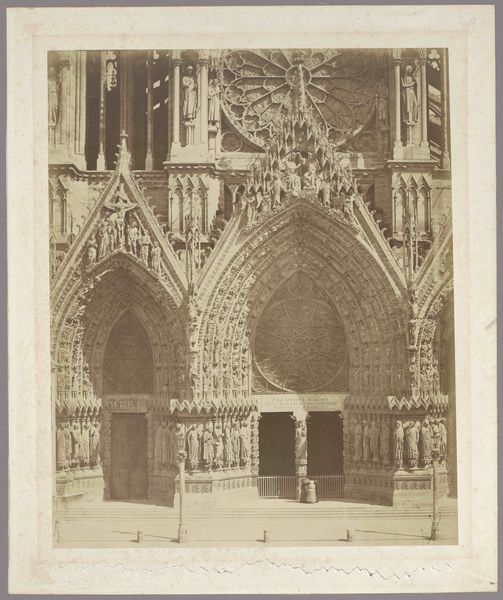
Dimensions: 32.7 x 24.5 cm (12 7/8 x 9 5/8 in. )
Copyright: Public Domain
Curator: This daguerreotype by Edmond Bacot, titled “Portail de la Cathédrale de Louviers,” captured between 1852 and 1854, invites us to consider the weight of history, quite literally cast in silver. What are your initial impressions? Editor: Overwhelming. So many repetitive gothic pinnacles and arches. It almost feels claustrophobic despite being an exterior shot. The photograph emphasizes this feeling, I think. It is undeniably a feat of early photography but slightly suffocating aesthetically for me. Curator: Indeed, there’s a certain density. For me it feels like peering into the past, the soft sepia tones adding to this sense. One almost feels transported into the medieval city—what was the access like? Editor: The visible process becomes really fascinating. We can easily look up high gothic, but seeing the rough hewn stone, the labor visible through its recreation here and then photographically—that intersection between high art and heavy industry really becomes interesting. This also leads me to imagine that it really puts the economics on view in the art: time, skill, labor power for a cathedral, time, skill and dangerous chemistry of a photograph. Curator: A striking observation. And it pushes the questions of value beyond mere aesthetic appeal, doesn't it? Are we contemplating the religious experience, the artisanship, the chemistry involved? There is a clear, devotional attentiveness from the labor and the subject! Editor: Precisely! And also considering that photography was only just beginning at the time Bacot took the picture adds a whole other layer to the labor of producing art that had only been accomplished via other reproductive visual means like drawings, paintings or prints. Curator: Absolutely, it’s a layering of crafts, and techniques, each with its own history of labor. But also an awareness of preservation perhaps? These images helped to archive disappearing architectural structures as industrialization swept through Europe. Editor: It makes one consider what we choose to record and how—not only do choices change what will be recorded but they determine what future people think important and worthwhile as well. I hadn’t considered the potential function of these plates as record-keeping as opposed to pure aesthetics or documentations of craft, though this lens certainly reinforces my first thoughts! Curator: Yes! A lovely double frame—considering the work itself, and what our labor toward the work makes. Thank you!
Comments
No comments
Be the first to comment and join the conversation on the ultimate creative platform.
